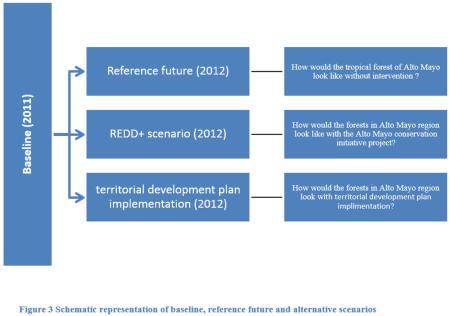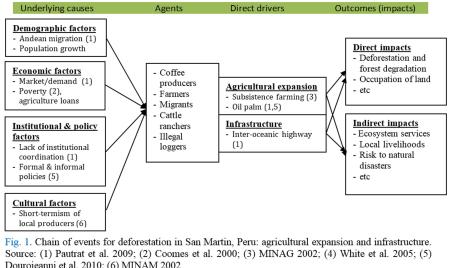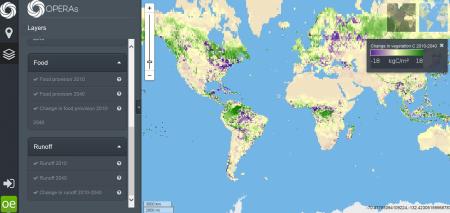
Resource description:
Peru is the second-largest country in Latin America in terms of forest area, and hosts ecosystems of high biodiversity value, large protected areas, ever-changing landscape mosaics with dynamic ecosystem transitions, and many indigenous communities and cultures. Although it is considered a country with low rates of historical deforestation, as of 2000 it simultaneously experiences rapid and extensive deforestation, mainly due to the conversion of forests to agriculture, pastures and other land uses in the country’s Amazon forests.
The main deforestation spots are located in the lower and mid altitude elevations of the mountainous forests in the departments of Loreto and San Martín. San Martín has a deforestation rate of 57 521 ha/year. Without interventions, projections of future deforestation rate show even a higher rate of deforestation in the region (MINAM, 2011).
San Martín is home to Alto Mayo Protected Forest (AMPF). Despite its environmental importance and recent history of declining deforestation rates, the threats to the Alto Mayo´s forest has increased in the last decade with the linking of infrastructure development projects and mainly due to forest conversion to subsistence farming and unsustainable coffee and rice plantations .
In response, several international (e.g. Conservation International) and national/local (e.g. AMPA) organizations are either designing or implementing a number of interventions, including different types of agroforestry systems, conservation agreements, watershed management and Reduced Emission from Deforestation and forest Degradation (REDD+) projects, whose main goal is to promote the sustainable management of Alto Mayo´s forests and its ecosystems services for the benefit of the local populations and the global climate. However, the potential effects of these interventions and management decisions on the ecosystem services (e.g. biodiversity, carbon, protection from natural disaster); livelihoods of forest-dependent communities (e.g. access to NTFP) and benefits to relevant stakeholders are yet to be critically analysed.
In this context, the Alto Mayo study has addressed three research objectives: first, it analysed how different management decisions affect land-use change and forest conversion; second, how the different management decisions affect the ecosystem services and the livelihoods of local communities, including communities exposure to natural disasters; and thirdly, it analysed and quantified the losses and wins under different management decisions for different stakeholder groups. The study covered the whole of Alto Mayo. For these three differnt scenarios economic, enviropmental and socia-cultural impacts are assessed in terms fo ES/NC using ToSIA. The results are quantified adn presented in this report.
Author/Contact:
Yitagesu T. Tegegne, Diana Tuomasjukka, Yidnekachew Habte (EFI)
Images
Partners:
Ulla Helimo (CI), Bruno Locatelli (CIFOR), Karin Viergever (ecometrica), Daniele Codato
Licence:
- Free, no licence
Development stage:
- Early access - alpha phase
Quality assurance:
- Professional references

